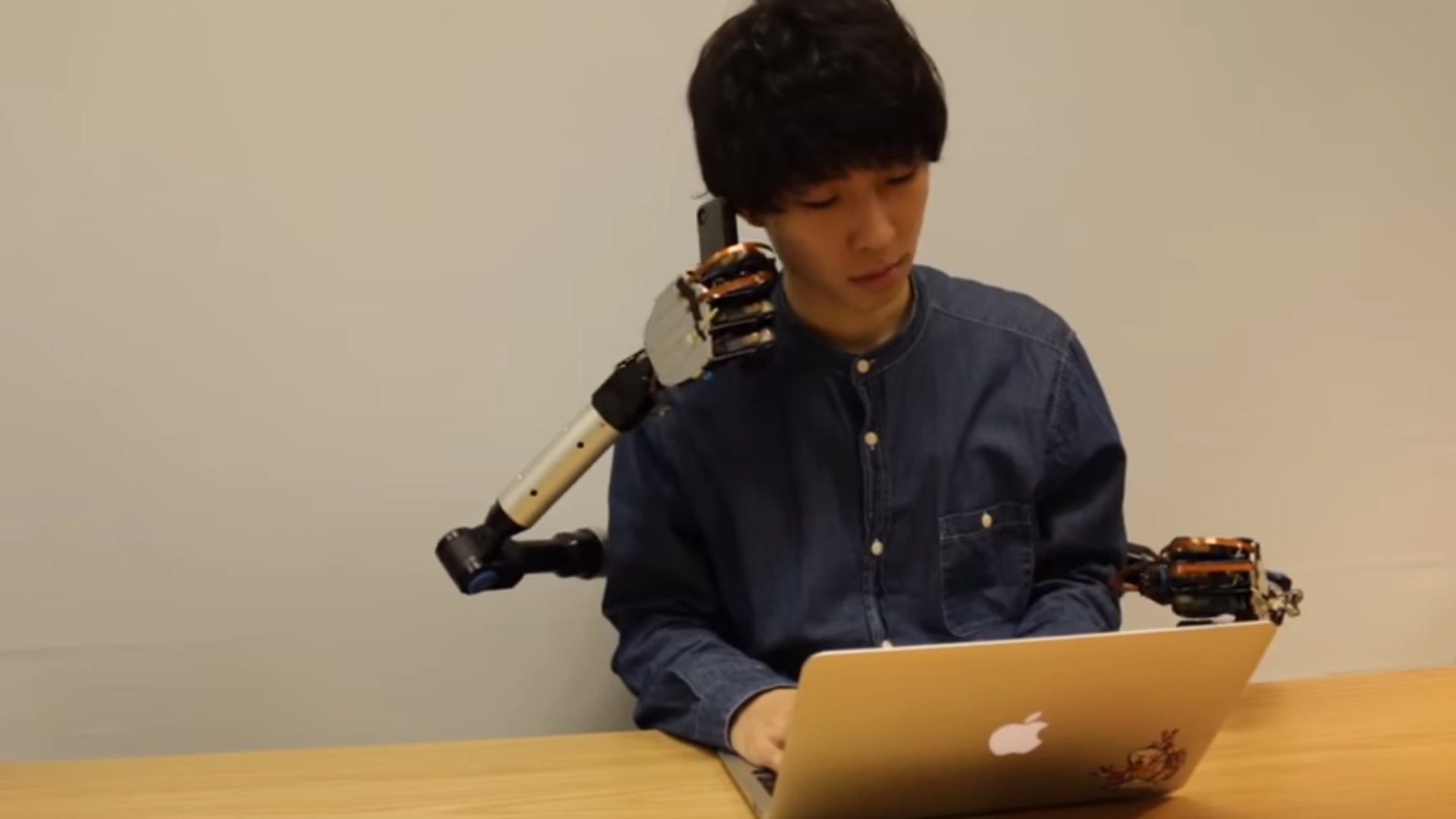These artificial arms can be controlled by... your legs
Need a hand?

If two heads are better than one, then what are four arms? That's the important question posed by a collection of Japanese roboticists from the Inami Hiyama Laboratory, who've developed an additional pair of robotic arms that you can add to your body.
Their project is titled 'MetaLimbs: Multiple Arms Interaction Metamorphism'. It ties the movements of these robotic arms to the motion of your legs – with tracking markers on your feet and knees allowing you to control the wrist and elbow joints respectively. Bending sensors on your toes control the fingers.
"Sometimes we face problems because of physical limitations in the number of limbs," the researchers explain in a video they put together showing their system in action.
"We propose metalimbs – adding additional artificial limbs to your own body. The artificial limbs can be customised depending on various situations."
Haptic feedback
One neat trick is that the limbs also include haptic feedback – touch sensors on the artificial limb are connected to force feedback mechanisms on the foot. So, for example, if you touch something against the hand a belt tightens around the foot, allowing you to 'feel' it.
The arms are designed to be used while sitting, but they can also be worn while standing.
"You can use your actual two arms while holding an object with the robotic hands," the team says.
Get daily insight, inspiration and deals in your inbox
Sign up for breaking news, reviews, opinion, top tech deals, and more.
The best bit of the above demo video, though, comes at about 1.45, where a variety of people are shown trying to awkwardly use the system. Everyone looks faintly terrified of their new appendages.
In other artificial limb news today, MIT researchers have developed a surgical technique that could make prosthetic limbs feel more natural, and a wearable system that helps visually-impaired people navigate; the Wyss Institute in Boston has created a soft robotic exosuit that makes it easier to run; and Danish scientists have found that virtual reality can trick the brain of an amputee into thinking it's still in control of a missing limb.
